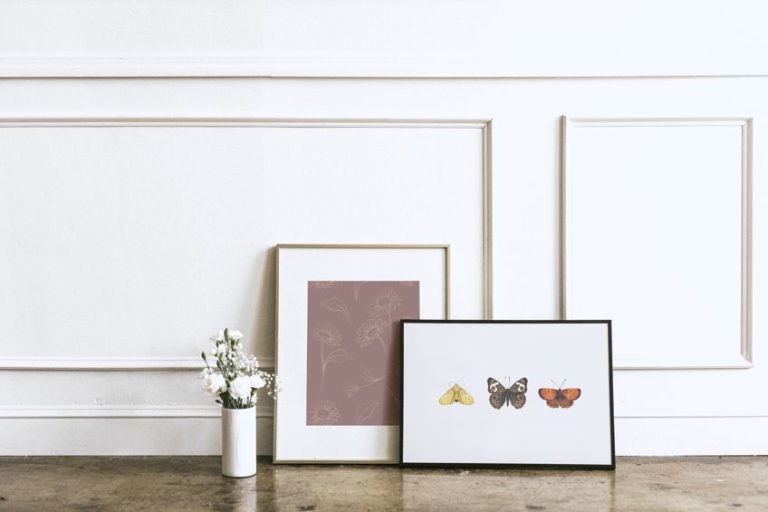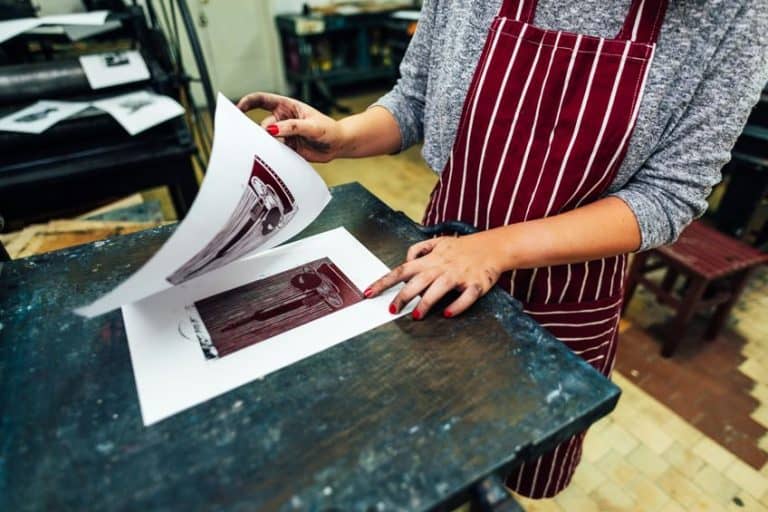Find an Artist by Name – How to Identify the Creator of an Artwork
This post may contain affiliate links. We may earn a small commission from purchases made through them, at no additional cost to you.
It is easy to find out more about an artist or their paintings by consulting biographical dictionaries or web searches, but what happens when you do not know the name of the artist? We have found some of the best ways to show you how to find the artist of a painting that you love, if you only have the piece, as well as how to find out its worth.
Table of Contents
Where to Start
Whether you found your painting at a thrift store or flea market, at a family home, or even just saw one that you liked online or in an office building, the best way to start when you are trying to find an artist by name is to check the painting itself.

Try to find out as much information as you can about the piece by examining it closely. Check the piece for a title and make note of the art style as this can be useful in finding out who painted it. Do not forget to check the back of the piece for notes or information regarding its origins or creator. Numbers on the painting or frame could mean that it was previously auctioned, which means that it likely has some value and you might be able to find out where it was auctioned to find out more about the piece.
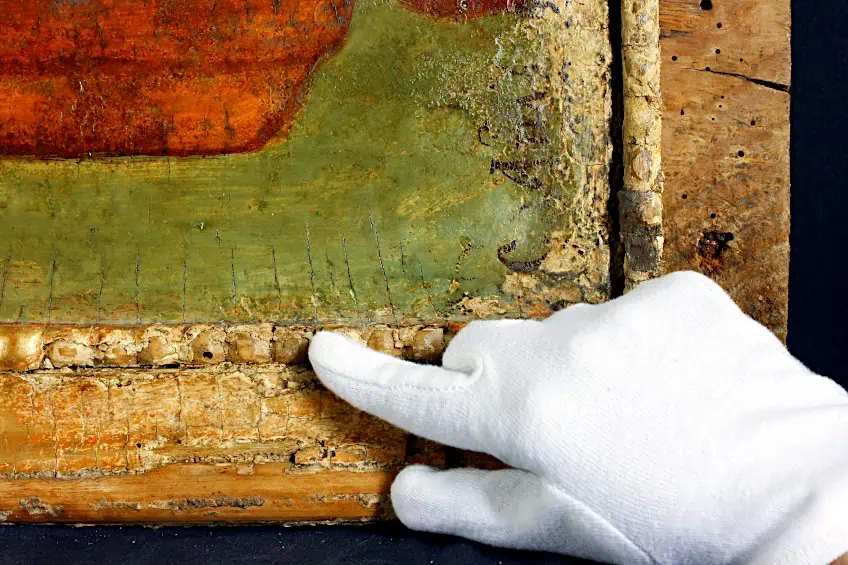
If the piece is a family heirloom or you purchased it, find out if family members or the previous owner know any details about the painting such as the title or year it was created. Emailing the building or site owner can also yield some information on the painting and its artist.
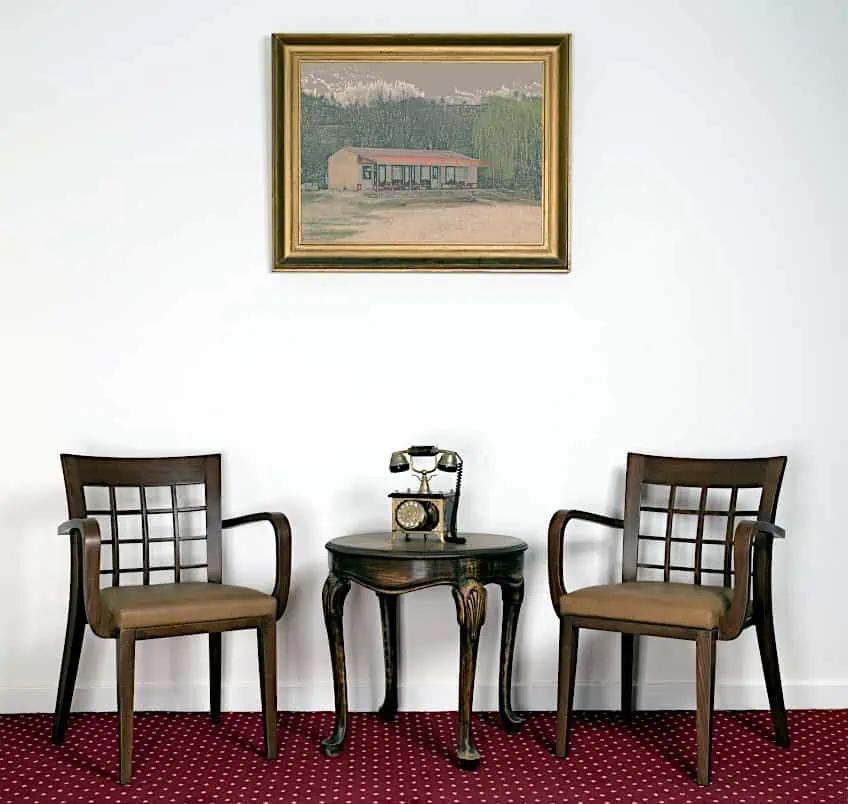
Different Methods to Identify Your Painting’s Artist
Sometimes, even knowing the title of the work might not be enough in your artist search. This is because these occasionally change over time making it even more difficult to find who painted your piece. We have compiled a list of the best ways to identify the artist of your painting if you only have the piece.
Just Google (Image) It
Modern technology means that it is much easier to find information than it has ever been before. Google has an option that allows you to search the internet for a match to your picture. To do this, take a picture of the painting ensuring that it is well lit and without your flash if possible. Next, crop your photo just to include the frame and painting and save it as a JPG file. Open Google and find “images” in the top right corner of the search page. Here you can upload or drag the photo of your painting into the search bar where it will try and find the best match or related images, as well as any information on it available online.
You can also use Google to try to identify artist signatures by photo using the same method. Crop your photo to only include the signature and search it to return any similar images which may identify your artist.
Google Lens
If you are looking for a more art-orientated search, Google Lens is an app that uses image recognition technology to scan art databases with millions of images. This app removes the abundance of non-art-related content you get with a normal Google search. If you get a match, the app provides you with not only the artist’s name and when it was created but also some information surrounding the piece and painter, and sometimes even about the museum or gallery that houses it.
Image Recognition Apps
Many other apps are also available specifically for identifying paintings and other artworks. Similar to a Google search, take a picture and upload it to an app that uses image recognition software to search their databases for a match. The Magnus app is one of the more popular databases for those trying to identify a painting. These apps can save many hours of research, but despite the large size of the database, there will inevitably be many that are not included.
Both image recognition apps and Google also find it difficult to recognize images that are taken from an angle or distance.
Artist’s Signatures
If your painting has a signature, then this is one of the best ways to identify the artist that signed it. Luckily, many paintings are signed by the artist so that others recognize that this piece belongs to them and cannot claim the painting as their own. Because of this, signatures are often in one of the corners on the front of your piece.
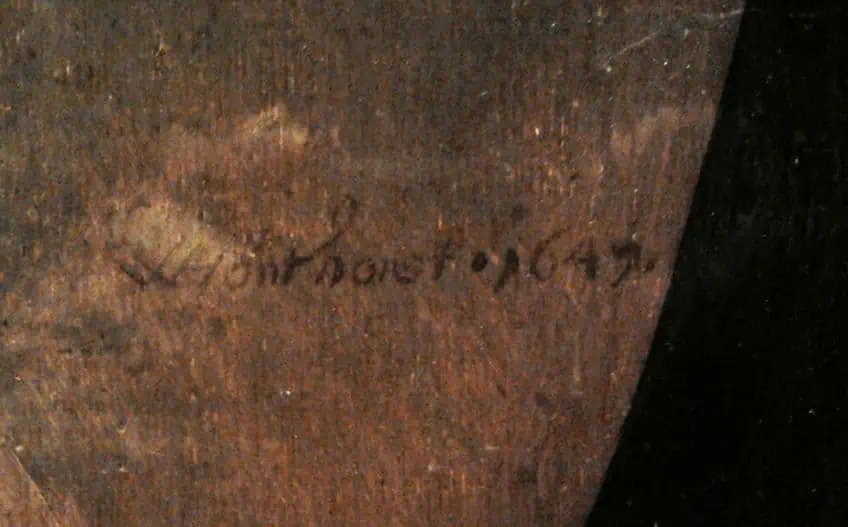
Although uncommon, a signature can also sometimes be found on the back of the artwork. If the artist’s signature is easy to make out, then simply look up the artist’s name to find if this is one of their artworks. Some signatures can be unclear to read so if you do not get the right artist the first time, you might need to try out different similar letters. There are many signature dictionaries available and there are even websites that let you identify artist signatures by photo, useful for ones that are highly stylized or difficult to read.
Monograms
Many artists may choose not to sign their works but instead opt to stylize their initials into monograms. Monograms are two or more letters, usually initials, that are designed to create one symbol. They are mainly used in paintings as signatures, but all artists from sculptors to glass blowers to literary works have been known to make use of monograms.
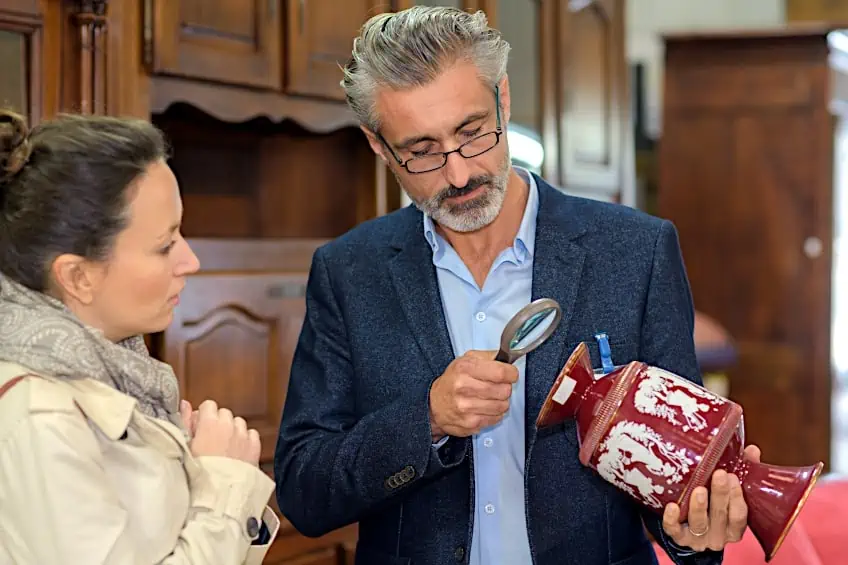
Traditional monograms have three letters consisting of the first letters from the first name, last names, and middle or maiden name, respectively. The middle letter is usually bigger than the other two, however, block monograms have all three letters the same size. In some monograms, the letters even overlap. These are more recognizable than plain initials, so it is easier to find an artist by name, especially if the initials themselves are uncommon.
If you see a monogram on your painting, then you can search for these letters in monogram dictionaries or websites. If you get a match, these websites return most of the paintings by artist name closest to your search. Like signatures, many monograms are highly stylized making it hard to make out the exact letters or order so might take a few tries experimenting with different letter arrangements and similar letters if you do not get results the first time.

There are many websites that are useful if you only have a partial name. You can perform an artist search by last name, only the first few letters, or a pseudonym. Many of the sites that provide signature and name searches also allow you to filter your search if you are looking for a painting that was made in a specific time period. This is useful if you know the year or the approximate date, or an artist from a particular country.
Manually Searching Databases
Sometimes your artist’s signature or monogram may not be available in online archives, in which case you may have to manually search through different databases and archival records to find out who is the artist of your painting. This happens especially with monograms or more obscure artists. Digital and hardcopy archives are available at large public libraries and some universities, where they usually organize paintings by artist name. To access them you usually require an appointment but will often have someone with you to help guide your search.

Do not forget to also consult auction indexes and collection inventories. Start your artist search by last name and the title of the piece if you know it. Remember that different archives will have records for different years and art styles, so even if your local one does not have what you are looking for, they may be able to point you to one that does and save you some time.
It is important to note that not all names on a piece may actually belong to your artist. Previous owners’, foundry, fabricator, and even the material supplier’s names or monograms can appear on a work or an attached tag. These can still give you a clue as to who your artist is and where they have worked before. Try contacting them if they are still available or checking their records as they might get you closer to finding your artist’s name.
Seek Out an Expert
If you are still struggling with how to find an artist, consulting an art gallery, museum, or historical society can help you learn more about your painting, especially if they deal with similar art styles. If your painting has a gallery or framer label that is still in operation, then this is a good place to start your artist search. Call or email or make an appointment to see if they have any information on the piece or artist. Posting your painting in art forums could also result in someone recognizing it or its artist.
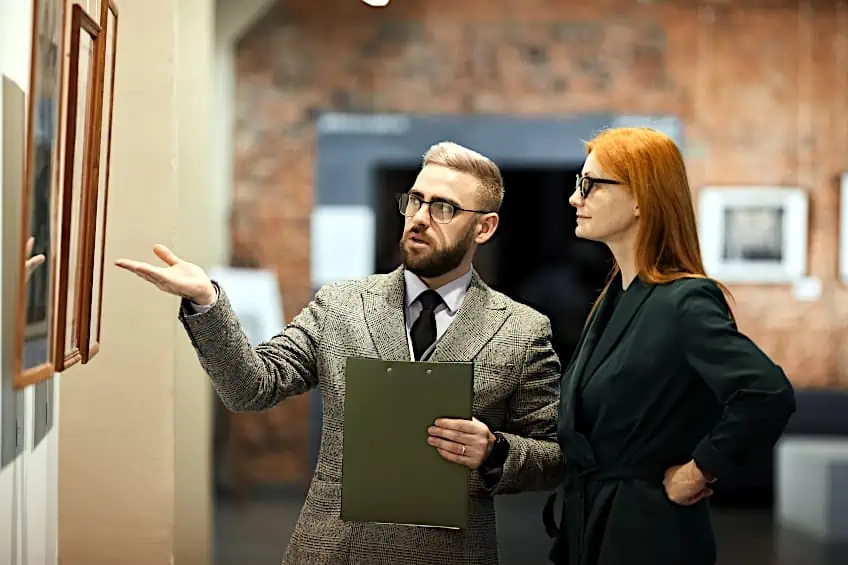
Some of these experts may even be able to tell you who your artist is if they make use of distinct markings in their paintings. Markings are made every time the artist touches the canvas with their brush. They are used to convey mood and movement as well as create the art itself. While there are many ways of mark-making, certain artists have signature marks that easily identify their paintings. It is worthwhile to consult these experts as even if they cannot tell you who the artist is, they may be able to tell you the era or art style of your painting to narrow your search.
Determining the Value of Your Painting
Now that you know how to find the artist of a painting, you may want to know its value as well. The value of art changes constantly so it is very hard, if not impossible to give any piece of art a set value. The price can be affected by factors such as the condition of the piece, its current popularity or desirability, the interests of the seller and buyer, as well as broader market trends.

The first thing to determine when trying to find out the value of your piece is if it is an original or a print. A print will show small uniform dots or pixels under a magnifying glass and are unsigned and often mass produced. As a result, they often have very little resale value. A print or reproduction is usually accompanied by information about how many have been produced and who printed it, often at the back of the piece.
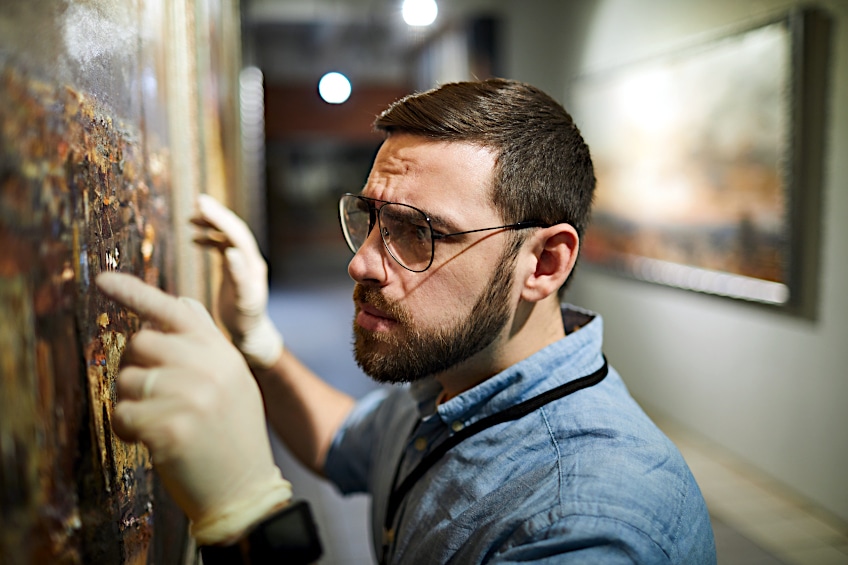
Reproductions are not the same as prints, and while the sheer number of prints makes them worth quite little, some reproductions can be valuable if they are part of a limited edition set. These will be signed, are of a higher quality than other reproductions, and include how many were made and which number your piece is. While less common, some limited-edition modern prints can also be valuable. Collectors are usually very interested in these works, especially those with smaller numbers. All reproductions include a notice or label of who produced it and an acknowledgment that it is a recreation and not the original work else they would be considered forgeries.
If your painting is not a print, once you have the name of your artist you can see what some of their other works sell for in auctions and to collectors to get an idea of your piece’s value. A lot of artists have their own websites or online listings, and these can give you an idea of the value of their paintings.

Price guidebooks can also give you an idea of current auction prices and sales. These guides are normally published annually and available in art museums, universities, larger public libraries, or online.

While many galleries or institutions will not offer to give an exact value, appraisers are specialists who you can pay to evaluate your artwork and provide you with a written report of its value. Ensure that the appraiser you choose is familiar with the art style and type of your piece. If you are looking for a more unofficial appraisal, auction houses often share some of their staff expertise during open house days.
Factors That Affect the Value of Your Artwork
There are various factors that appraisers account for when determining the value of your piece. Many of these factors change over time so the same painting can be worth more or less than it was a few years prior. The artist is arguably the most important factor in the value of your painting. Artists who are well known will have paintings that are worth more even if their condition is less than ideal. If your painting is part of a set, a particular art period, or an artist that is in demand, it could be worth more if it is sought after by collectors.

The condition of the painting also has a large bearing on its value. If the condition of the piece is good, then even lesser-known artists’ paintings can be worth a couple hundred dollars. Depending on the age of the painting and the type of paint used, if the colors have not faded and the paint has no major chips or cracks then your painting could be worth more. Having the painting still in its original frame along with identifying documents like a signature or proof of authenticity also increases the value of the painting.
Forgeries
It is important to beware of forgeries, especially if the artist is well-known or in demand. Forgeries are copies of paintings that try to pass as the original. Most are very high quality and convincing, especially for the average person. Some are even so good that an expert has to identify painting pigments to recognize them as frauds. Therefore, it is common practice for an expert to verify very expensive paintings when they are sold or bought for peace of mind.
Forgeries can have differences in small details such as brush strokes or markings. If the painting is supposed to be older, it may smell musty and not like paint, though many forgeries can also be centuries old. The faded colors and cracks in oil paints are difficult to replicate so should be compared to a picture of the original. A copy should not be confused with a forgery, a copyist recreates a painting for a fee for clients who know that it is not the original piece, many copyists even sign their own name on the artwork.
Selling Your Piece
Now that you know the worth of your painting, how do you sell it? Auction houses are arguably the best way to sell your painting. You will get a lot of advertising to the right people, especially if you choose an auction house that specializes in collectibles and antiques, so are likely to get the best price. Art dealers or art galleries will not net you as much money as an auction house, but their process is relatively hassle-free and quicker than an auction, with no pressure to sell if you are not happy with the offered price.
You could sell your painting online on sites like eBay or Amazon, although this is not ideal because there is limited advertising, meaning people will have to be actively looking for your piece. You will also have to account for shipping and transportation fees. If you are looking to sell your piece at any price and not worry about shipping, then you could sell it at a flea market or yard sale for someone else to pick up.
Today, there are many ways that can help you find the artist of a painting, some of which you can do from the comfort of your computer. If you feel drawn to your painting, others will too and even if you cannot find the name of your artist, you at least have a beautiful piece to enjoy in your home or to sell to someone who feels the same way.
Frequently Asked Questions
Can Google Identify Painting Artists?
Yes, Google is very good at identifying well-known paintings and their artists from photographs. Take a picture of your painting and crop it until just the frame and painting are in view, and then upload it as a JPG file. If you are lucky, Google will return the title of the painting as well as the artist and other information.
How to Find an Artist by Their Signature?
There are books available in large public libraries, art museums, and certain universities. Many online databases also let you search whole or partial signatures to find out the artist, which also works for initials or monograms.
How Can I Tell if My Painting Is an Original or a Print?
Prints usually have a very clear, uniform edge and if you look at them under a magnifying glass, you will see they are made of lots of uniform dots or pixels. In original paintings, you will be able to see brushstrokes and layers of paint, especially if the artist used thicker paint.
Megan is a writer and researcher who graduated from the University of Cape Town with a degree in Social Sciences, specializing in Psychology and Environmental Science. Her passion for knowledge and leaving a positive impact has fueled her current work in conscious and sustainable growth in Southern Africa. Megan’s love of nature has also led her to train as an animal behaviorist. She works part-time training and rehabilitating dogs. Megan is interested in the physical and psychological effects of colors in our environment on our mood and well-being. In addition, she is concerned with how art and creativity have been an integral part of human society. Megan van Schoor has been writing blog posts on the topics of painting, drawing, and color theory for acrylgiessen since 2021.
Learn more about Megan van Schoor and about us.




